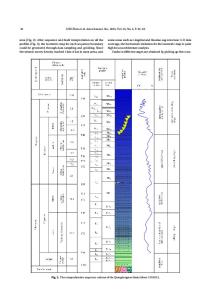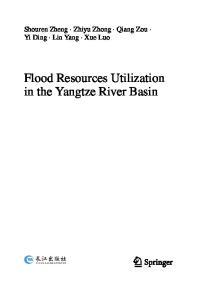A heavy mineral viewpoint on sediment provenance and environment in the Qiongdongnan Basin
- PDF / 3,627,755 Bytes
- 15 Pages / 595 x 842 pts (A4) Page_size
- 20 Downloads / 306 Views
A heavy mineral viewpoint on sediment provenance and environment in the Qiongdongnan Basin LIU Xiaofeng1, ZHANG Daojun2, ZHAI Shikui1*, LIU Xinyu2, CHEN Hongyan1, LUO Wei2, LI Na1, XIU Chun1 1 Key Laboratory of Submarine Geosciences and Prospecting Techniques of Ministry of Education, College of Marine
Geosciences, Ocean University of China, Qingdao 266100, China 2 Zhanjiang Branch of China National Offshore Oil Corporation (CNOOC) Limited, Zhanjiang 524057, China
Received 23 June 2014; accepted 2 December 2014 ©The Chinese Society of Oceanography and Springer-Verlag Berlin Heidelberg 2015
Abstract
Based on heavy mineral data in core samples from eleven drillings, supplemented by paleontological, element geochemical and seismic data, the evolution of sediment provenance and environment in the Qiongdongnan Basin (QDNB) was analysed. The results show that the basement in the QDNB was predominantly composed of terrigenous sediments. Since the Oligocene the QDNB has gradually undergone transgressions and evolution processes in sedimentary environment from terrestrial-marine transitional to littoral-neritic, neritic, and bathyal roughly. The water depth showed a gradually increasing trend and was generally greater in the southern region than that in the northern region in the same time. With changes in sedimentary environment, provenances of the strata (from the Yacheng Formation to the Yinggehai Formation) showed principal characteristics of multisources, evolving from autochthonous source, short source to distant source step by step. During the Early Oligocene, the sediments were mainly proximal basaltic pyroclastic source and adjacent terrigenous clastic source, afterwards were becoming distant terrigenous clastic sources, including Hainan Island on the north, Yongle Uplift on the south, Shenhu Uplift on the northeast, the Red River System on the northwest and Indochina Peninsula on the southwest, or even a wider region. The Hainan Island provenance began to develop during the Early Oligocene and has become a main provenance in the QDNB since the Middle Miocene. The provenances from Yongle Uplift and Shenhu Uplift most developed from the Late Oligocene to the Early Miocene and gradually subsided during the Middle Miocene. During the Late Miocene, as a main source of sediments filled in the central canyon, the Red River System provenance added to the QDNB massively, whose impact terminated at the end of the Pliocene. The western Yinggehai Basin (YGHB) provenance derived from Indochina Peninsula had developed from the Pliocene on to the Pleistocene. In addition, the material contribution of marine authigenous source to the basin (especially to the southern region) could not be ignored. Key words: heavy minerals, provenance, sedimentary environment, Qiongdongnan Basin, northern South China Sea Citation: Liu Xiaofeng, Zhang Daojun, Zhai Shikui, Liu Xinyu, Chen Hongyan, Luo Wei, Li Na, Xiu Chun. 2015. A heavy mineral viewpoint on sediment provenance and environment in the Qiongdongnan Basin. Acta Oceanologica Sinica, 34
Data Loading...










